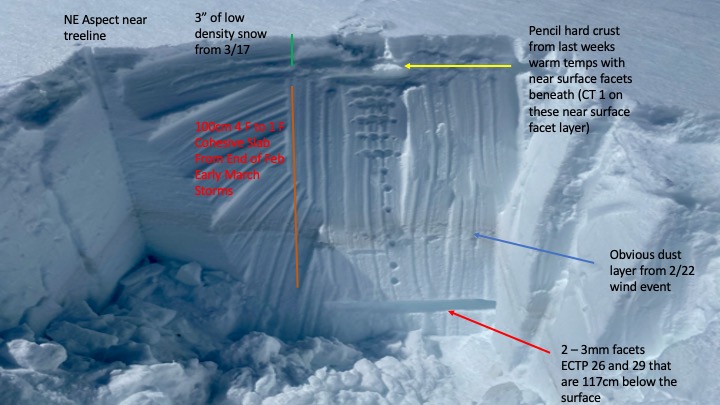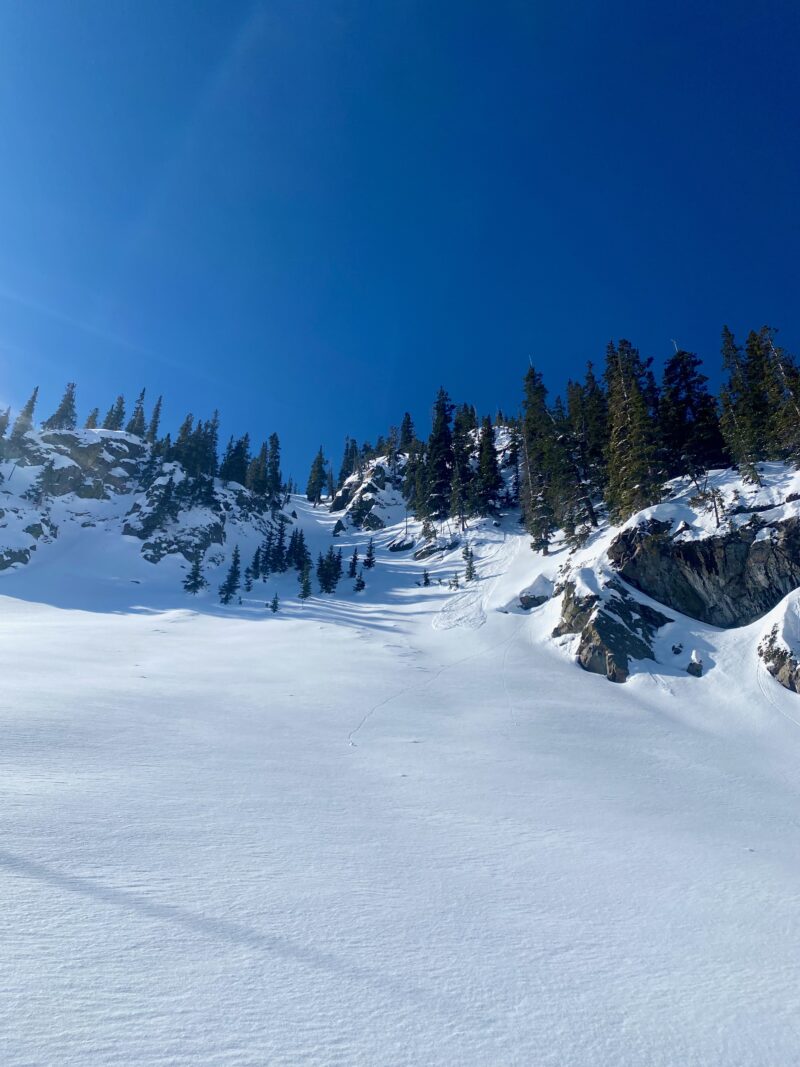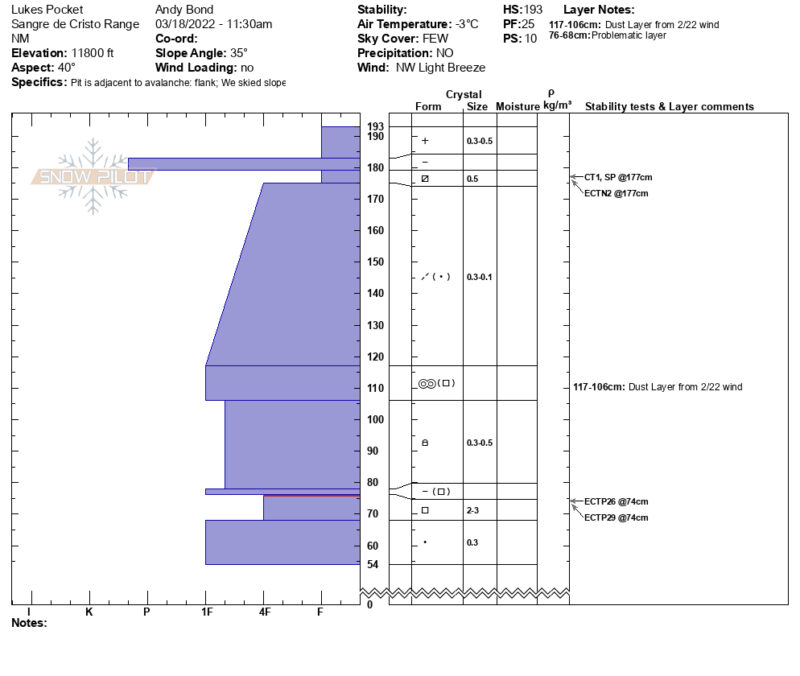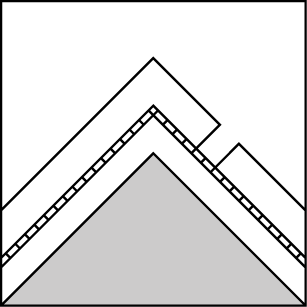Basic Information
Observation Details
Observation Date:
March 18, 2022Submitted:
March 18, 2022Observer:
TAC - AndyZone or Region:
Taos AreaLocation:
High Traverse from Lake Fork to Wildy BowlSigns of Unstable Snow
Recent Avalanches?
YesCracking?
None ExperiencedCollapsing?
None ExperiencedSnow Stability
Stability Rating:
GoodConfidence in Rating:
ModerateStability Trend:
SteadyBottom Line
Not much is changing with the persistent slab problem that is deeply buried 100 to 150 cm below the surface. These layers rest below dense slabs above and are showing signs of strengthening and healing but are not there yet. Time heals all wounds but if you were to trigger a persistent slab avalanche the consequences would be very high.
Media



Advanced Information
Weather Summary
Cloud Cover:
Mostly SunnyTemperature:
15 - 36Wind:
Light , NWPleasant morning with more sun than expected with only a few clouds this morning. 3 to 4 inches of low-density snow is available for transport but winds were light and no snow was moving.
Snowpack Observations
There is 3 to 4 inches of low-density snow from yesterday's storm. Was not finding any reactive wind slabs but did not make to ridgelines, especially on West aspects where I'd expect to find them from the E/NE wind. There is a crust from warm temperatures and our intense sun on solar (W,S,E) aspects and lower elevations that is was 3 to 10 cm thick. Below the crust is near-surface facets that are forming and was producing very easy results in compression tests but is not a concern right now as there is no cohesive slab on top. With the potential of a significant storm Sunday evening through Monday this layer may become a bigger problem down the road.
Dug several pits across different northerly and east aspects across multiple elevation bands and all looked relatively similar. Faceted weak layers continue to linger 100 - 150cm down from the surface beneath dense slabs. The weak layers are beneath an obvious dust layer that formed during the 2/22 wind event. You can use this as a barometer to see if you've dug down deep enough. These weak layers were producing moderate to hard results in extended column tests but have been showing signs of healing and strengthening. I don't feel were there quite yet
Avalanche Problems
| Problem | Location | Distribution | Sensitivity | Size | Comments |
|---|---|---|---|---|---|
 Persistent Slab
Persistent Slab
|
|
The persistent slab problem is stubborn but relatively widespread on northerly and east aspects. It's been showing signs of healing and strengthening recently. My guess is after this next potential big storm and subsequent days after we may be able to move on from this deeply buried weak layer. |
Terrain Use
Dust on crust on non-northerly aspects. Very pleasant boot-top powder skiing on northerly slopes
Close